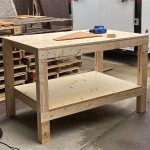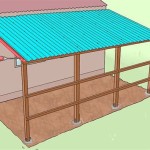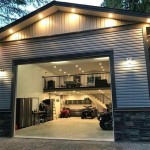The Perfect Flooring Solution For Your Garage Door
The garage is often a neglected space, serving primarily as a storage area or parking spot. However, with some thoughtful upgrades, it can be transformed into a functional workshop, a home gym, or even an extension of the living area. One of the most impactful improvements one can make is upgrading the flooring. Selecting the perfect flooring solution for your garage door area involves considering a multitude of factors, from durability and aesthetics to cost and ease of installation. This article explores various flooring options, highlighting their strengths and weaknesses to help you make an informed decision.
The area directly in front of the garage door endures significant wear and tear. Cars drive over it daily, often tracking in dirt, oil, and road salt. Furthermore, exposure to the elements can also damage the front side of the garage; rain, snow, and sunlight can all contribute to the deterioration of the flooring surface. A robust flooring solution needs to withstand these conditions without cracking, chipping, or staining. The ideal flooring will not only protect the underlying concrete but also enhance the aesthetic appeal of the garage’s entrance.
Several factors influence the selection process. The primary considerations are the intended use of the garage and the budget allocated for the project. For instance, a garage primarily used for parking will have different flooring needs than a garage used as a workshop. Similarly, the cost of materials and installation can vary significantly, impacting the overall feasibility of the project. These factors, along with the desire for a durable, aesthetically pleasing, and easy-to-maintain surface, will ultimately guide the selection of the perfect flooring solution.
Considerations for Selecting Garage Door Flooring
Several key considerations play a role in choosing the right flooring solution for the garage door area. These include durability, resistance to chemicals and extreme weather conditions, ease of cleaning and maintenance, aesthetic appeal, and cost.
Durability is paramount. The flooring must withstand heavy loads, constant traffic, and potential impacts from tools or dropped objects. A flooring solution that quickly degrades under pressure will require frequent repairs or replacement, leading to increased costs and inconvenience. The material should be able to resist cracking, chipping, and abrasion, maintaining its structural integrity over time.
Resistance to chemicals and extreme conditions is another critical aspect. Garages often house vehicles, which can leak fluids such as oil, gasoline, and antifreeze. These chemicals can stain or damage certain flooring materials. Similarly, exposure to extreme temperatures, freeze-thaw cycles, and prolonged sunlight can also affect the longevity and appearance of the flooring. A flooring solution that is resistant to these elements will ensure long-term performance and minimize maintenance requirements.
Ease of cleaning and maintenance is essential for maintaining a clean and organized garage. Flooring that is difficult to clean or requires specialized cleaning products can be a burden. The ideal flooring should be easy to sweep, mop, and scrub, allowing for quick and efficient cleanup of spills and debris. A smooth, non-porous surface is generally easier to clean than a rough or textured surface.
Aesthetic appeal is also an important factor, especially for garages that are used as more than just parking spaces. The flooring should complement the overall style of the home and create a visually appealing environment. A variety of colors, patterns, and textures are available, allowing for customization to suit individual preferences. A well-designed flooring solution can significantly enhance the look and feel of the garage entrance.
Finally, cost is a significant consideration. The price of materials and installation can vary widely depending on the type of flooring selected. It is important to balance the desired features and benefits with the available budget. Consider the long-term cost of ownership, including maintenance and potential repairs, when evaluating different flooring options.
Popular Garage Door Flooring Options
Several flooring options are commonly used for garage door areas, each with its own advantages and disadvantages. These options include concrete sealers, epoxy coatings, interlocking tiles, roll-out mats, and concrete overlays.
Concrete sealers are the most basic and affordable option. They are typically applied to bare concrete to protect it from stains, dust, and moisture. Sealers penetrate the concrete surface, creating a barrier that prevents liquids from seeping in. While sealers offer some protection, they are not as durable as other flooring options and may require reapplication every few years. They are best suited for garages with light traffic and minimal exposure to chemicals.
Epoxy coatings are a more durable and aesthetically pleasing option compared to concrete sealers. Epoxy is a two-part system that consists of a resin and a hardener. When mixed, these components create a hard, durable, and chemical-resistant coating. Epoxy coatings are available in a variety of colors and finishes, allowing for customization to suit individual preferences. They are ideal for garages that experience moderate to heavy traffic and exposure to chemicals. However, proper surface preparation is crucial for ensuring a strong bond between the epoxy and the concrete. This often involves grinding or etching the concrete to create a porous surface. Epoxy coatings can also be prone to scratching and chipping if not properly maintained.
Interlocking tiles are a popular choice for DIY enthusiasts due to their ease of installation. These tiles are typically made of PVC or rubber and interlock to create a seamless flooring surface. Interlocking tiles are durable, chemical-resistant, and available in a variety of colors and patterns. They are also relatively easy to clean and maintain. One advantage of interlocking tiles is that they can be easily removed and replaced if damaged. However, they can be more expensive than epoxy coatings and may not be suitable for garages with uneven surfaces. Water can also seep underneath the tiles if the installation is not precisely done, creating a potential mold or mildew issue.
Roll-out mats are another convenient option for garage flooring. These mats are typically made of PVC or rubber and are available in various sizes and thicknesses. Roll-out mats are easy to install and provide a protective layer over the concrete floor. They are also relatively inexpensive and can be easily moved or removed as needed. However, roll-out mats may not be as durable as other flooring options and can be prone to tearing or shifting under heavy traffic. They are best suited for garages with light traffic and minimal exposure to chemicals.
Concrete overlays involve applying a thin layer of concrete or other cementitious material over the existing concrete surface. This option can be used to repair damaged concrete, create a decorative finish, or provide a smooth, level surface. Concrete overlays are durable and can be customized with various colors and textures. However, they require professional installation and can be more expensive than other flooring options. They offer a very durable, seamless look and can be significantly thicker than epoxy coatings, providing a substantial layer of protection. The initial cost is higher but the longevity of the flooring typically makes it worthwhile.
Installation and Maintenance Tips
Proper installation and maintenance are crucial for maximizing the lifespan and performance of garage door flooring. Regardless of the chosen flooring solution, following the manufacturer's instructions and taking preventative measures will help ensure a long-lasting and aesthetically pleasing result.
Surface preparation is a critical step in the installation process. The concrete surface must be clean, dry, and free of any debris or contaminants. Any cracks or imperfections should be repaired before applying the flooring material. For epoxy coatings and concrete overlays, proper surface preparation typically involves grinding or etching the concrete to create a porous surface that will allow the flooring material to bond properly. Failure to properly prepare the surface can result in poor adhesion and premature failure of the flooring.
Following the manufacturer's instructions is essential for ensuring a successful installation. Each flooring material has specific installation requirements that must be followed carefully. This includes proper mixing ratios for epoxy coatings, correct tile alignment for interlocking tiles, and proper curing times for concrete overlays. Deviating from the manufacturer's instructions can compromise the integrity of the flooring and void any warranties.
Regular cleaning and maintenance are necessary for maintaining the appearance and performance of the flooring. Sweeping or vacuuming the floor regularly to remove dust and debris will prevent buildup and scratching. Spills should be cleaned up immediately to prevent staining or damage. For epoxy coatings, using a mild detergent and a soft cloth or mop is recommended. Harsh chemicals or abrasive cleaners should be avoided as they can damage the coating. Interlocking tiles can be cleaned with a damp mop and a mild detergent. Regular inspections should be conducted to identify any signs of damage, such as cracks, chips, or loose tiles. Addressing these issues promptly will prevent further damage and extend the lifespan of the flooring.
Protecting the flooring from heavy impacts and sharp objects will help prevent damage. Using floor mats or pads under heavy equipment or tools can cushion the impact and prevent scratches. Avoid dragging heavy objects across the floor, as this can cause abrasion. Consider placing a rubber mat where you typically park your car to prevent any moisture of oil from damaging the flooring coating.
Consider the environmental conditions when selecting and maintaining garage flooring. In areas with harsh winters, ensure that the flooring is resistant to freeze-thaw cycles and road salt. Applying a sealant or coating that is specifically designed for these conditions can provide added protection. In areas with high humidity, ensure that the flooring is moisture-resistant to prevent mold and mildew growth.
By carefully considering these factors and following proper installation and maintenance procedures, one can select the perfect flooring solution for the garage door area and enjoy a durable, aesthetically pleasing, and functional space for years to come.

Finding The Perfect Flooring Solution For Your Mechanic Garage Your1dayfloor

9 Best Garage Flooring Ideas In 2025

Garage Flooring Ideas 2025 Checkatrade

Garage Flooring Ideas The Home Depot

10 Affordable Garage Flooring Ideas For An Easy Upgrade Angi

Garage Floor Coating Options Polyurea And More

Inside Our Garage Gym Floors And More Nesting With Grace

9 Garage Flooring Ideas The Best Options You Need To Know About

Greatmats Perforated Garage Tile 25 Pack Gray

10 Affordable Garage Flooring Ideas For An Easy Upgrade Angi
Related Posts








